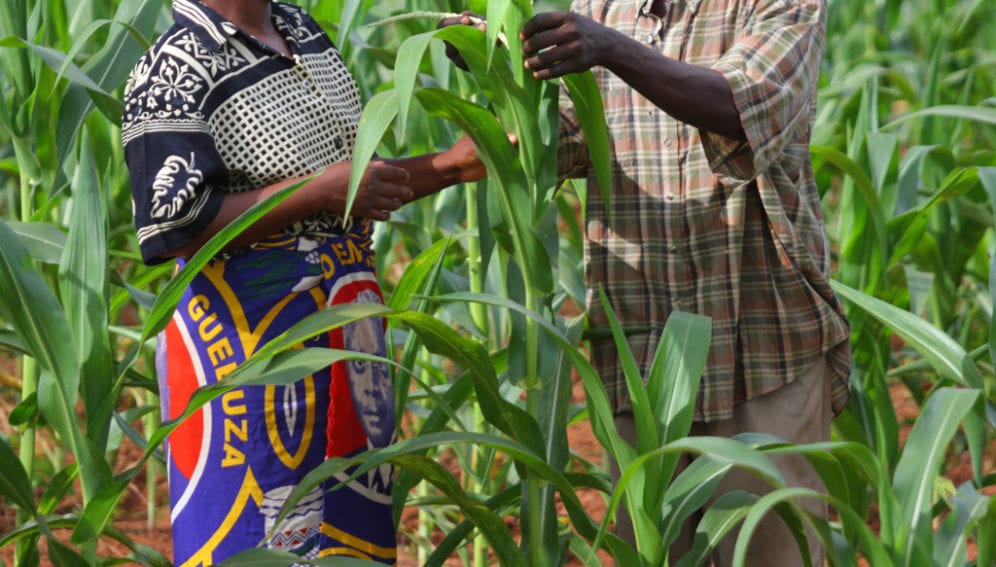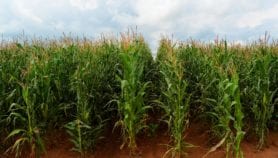By: Mercy Adhiambo
Send to a friend
The details you provide on this page will not be used to send unsolicited email, and will not be sold to a 3rd party. See privacy policy.
[NAIROBI] African farmers could double or even triple crop yields from their farms if they embrace integrated soil fertility management (ISFM), a new report shows.
According to the report, depletion of essential soil nutrients threatens food security and nutrition in Africa, adding that the continent loses US$4 billion a year from poor crop yields resulting from soil health issues.
The report, Seeking fertile ground for a green revolution in Africa, launched by the Alliance for a Green Revolution in Africa (AGRA) last month (22 August) in Nairobi, Kenya, says ISFM promotes practices such as the use of fertilisers, crop rotation and planting leguminous crops to improve soil quality.
“The first step towards food security is ensuring that small-scale farmers understand the importance of soil health when it comes to crop production.”
Bashir Jama, AGRA’s Soil Health Program
The report adds that ISFM is a five-year soil health programme by AGRA that began in 2009 in 13 countries in Sub-Saharan Africa — Burkina Faso, Ethiopia, Ghana, Kenya, Malawi, Mali, Mozambique, Niger, Nigeria, Rwanda, Tanzania, Uganda and Zambia.
Bashir Jama, the director of AGRA’s Soil Health Program, said during the report’s launch:
“The first step towards food security is ensuring that small-scale farmers understand the importance of soil health when it comes to crop production”.
AGRA trained 1.8 million smallholders on ISFM and promoted the concept to a further 3.5 million farmers in the countries, the report says.
One of the major proposals of the ISFM programme is for small-scale farmers in Sub-Saharan Africa to increase their fertiliser use from an average of eight kilograms a hectare to 50 kilograms in accordance with the Abuja declaration of 2006, says Qureish Noordin, a programme officer at AGRA.
“In Tanzania, 28,000 farmers participated and average maize yields more than doubled, from 1.5 to 3.5 tonnes per hectare while pigeon pea yields increased from 0.6 to 1.4 tonnes,” the report says.
Smallholders from Kenya’s Makeuni County, are benefitting from ISMF, according to Urbunus Mutua, a small-scale farmer who leads a group of about 10,000 other farmers in the county, and promotes the concept to his peers.
“Initially, farmers in Makueni County, a semi-arid area, were getting only 300 kilograms of sorghum a harvest, but with the use of ISFM, the productivity has increased up to one tonne [1,000 kilograms],” Mutua, tells SciDev.Net.
According to Noordin climate change could worsen soil degradation. “Governments should take urgent measures and increase agriculture budget so that there is availability and affordability of fertilisers,” says Noordin, adding that for Africa to attain food security, soil quality has to be considered a top priority.
Richard Onwonga, a lecturer at Kenya’s University of Nairobi in the Department of Land Resource Management and Agricultural Technology, adds that ISFM could be beneficial to farmers, but it should not target only individual smallholders.
“Farm sizes keep decreasing, so growing crops on the same piece of land in sequence may not work,” Onwonga explains. “Farmers should see beyond their own farm boundaries. Different farmers can grow different crops and share the harvests.”
Onwonga adds that practising agroforestry could ensure good soil health and balanced crop nutrition.
Link to the report.
This article has been produced by SciDev.Net's Sub-Saharan Africa} desk.














